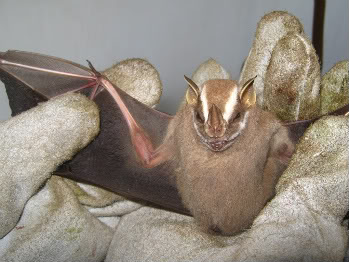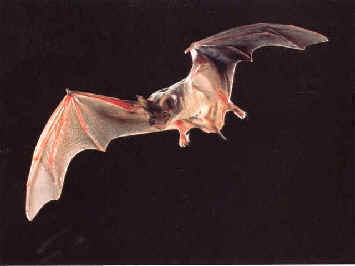Brazilian big-eyed bat
The Chiroderma doriae is a bat species from the family of leaf lobes ( Phyllostomidae ), which is native to South America. The genus name Chiroderma derives from the Greek words for hand and skin, while the describer Oldfield Thomas dedicated the species names his colleague Marquis G. Doria.
Description
Chiroderma doriae with a total length of 69 to 78.5 mm and an average weight of 30 g, the second largest species of the genus Chiroderma, which includes a total of five types. Only Chiroderma improvise visa is greater. The nasal bones of the genus Chiroderma are reduced, but this is not visible in live animals from outside. The coat color of Chiroderma doriae is gray-brown to reddish brown above with a bright stripe on the back and each with a white stripe and under the eye. The ears have a yellowish margin. Like most representative of the sheet tabs also has this kind a distinctive nose leaf.
Way of life
Little is known about the life of this kind. One assumes that it specializes in figs and therefore as seed dispersers makes a valuable contribution to the restoration of forests. However Chiroderma doriae and Chiroderma villosum the only cowardly -eating bat species that chew the seeds of the figs to get at the nutrients, which reduces the effect of seed dispersers. Like most frugivorous bats also has this kind of a fast digestive system. On average, the food remains only 14 minutes in the digestive tract before indigestible components are excreted. Chiroderma doriae occurs in primary and secondary rain forests. Observations in affect by human habitats are rare and restricted to Rio de Janeiro. Mostly the kind near fruiting fig trees along with Chiroderma villosum, Artibeus planirostris, Artibeus lituratus, Platyrrhinus is lineatus and Sturnira lilium caught. Chiroderma doriae is active throughout the night, but is caught mostly after midnight.
Distribution and habitat
Chiroderma doriae is located in the south- west of Brazil and Paraguay. Your stock is classified by the IUCN due to the widespread than safely.








